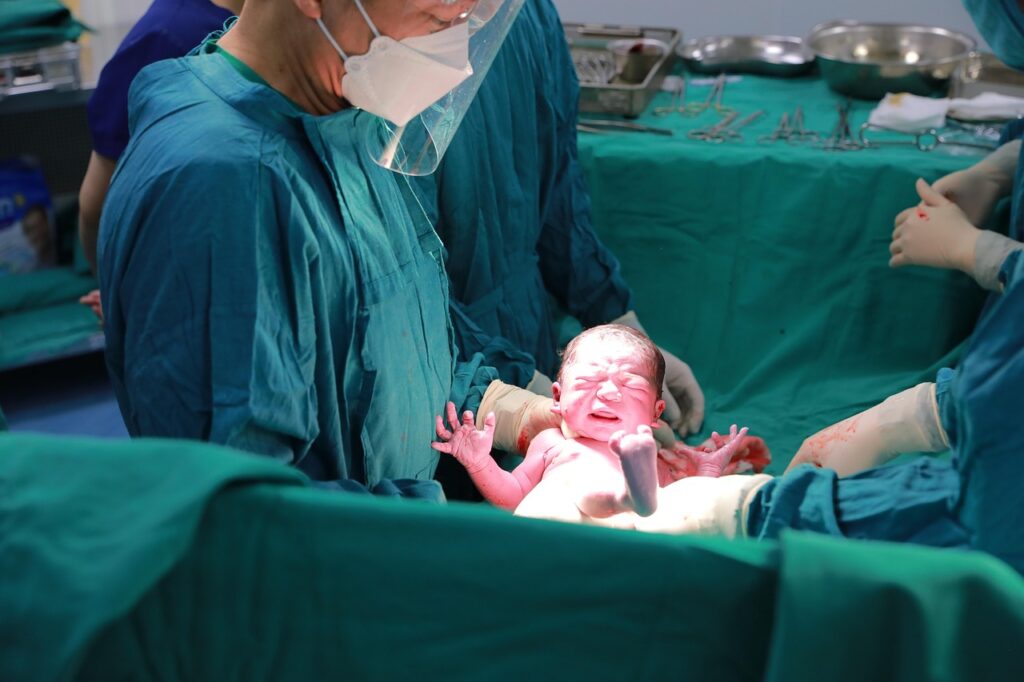Many mothers are unable to give birth naturally. This can be physically and emotionally very demanding. Often, mothers feel like “less of a mother” because they did not manage to “give birth,” and on top of that they also face physical pain and sometimes difficulties with breastfeeding in the beginning.
It is important to understand the challenges faced by mothers who give birth by cesarean section. If we know what these challenges are, it becomes easier to provide support and to cope with them.
Possible Challenges After a Cesarean Section
- Lack of skin-to-skin contact in the delivery room: often the baby is only shown briefly to the mother, and then placed on the father’s chest or handed to him dressed, while the mother is still being cared for. This means little to no initial contact between mother and baby, and breastfeeding is not possible right away. Yet these first hours have a huge impact on the future success of breastfeeding.
- Maternal pain: the mother experiences pain and usually cannot get up for the first six hours. Even afterwards, every movement can be difficult. Caring for a newborn requires a lot of energy right from the start.
- Separation: since the mother cannot get up initially, she is separated from her baby for at least the first six hours. In many hospitals, even those with rooming-in, the first night is often spent apart. As a result, during the first 6–12 hours, the baby may not breastfeed or only very little.
- Medication: the drugs given to the mother (anesthetics, fluids, painkillers) can affect the newborn’s alertness and willingness to suck. Many babies become sleepy and may receive formula or sugar water instead of breast milk.
- Delayed first breastfeeding: the first feeding often happens later and not on demand during the first 24 hours.
- Delayed milk coming in: for mothers who have had a cesarean, it may take longer (sometimes up to 72 hours after birth) for milk production to increase.
- Higher risk of complications: both mother and baby are more likely to experience complications, and often the cesarean is performed because of a medical condition that can also require further separation afterwards.
- Emotional impact: mothers may feel disappointment, frustration, guilt, or failure. Bonding with the baby can also take longer to develop.
What Can Be Done?
- Finding the right position: during the first 6 hours after a cesarean, the mother can only breastfeed lying down. Once she is allowed to lie on her side, side-lying breastfeeding is possible. The football hold (under the arm) is also a good option, as the baby won’t press on the incision. For the cradle hold, pillows can help prevent pressure on the surgical area.
- Be prepared for delayed milk: inform mothers that milk may come in later – sometimes only after 72 hours. Until then, frequent breastfeeding is important, and if that’s not possible, pumping should be started as soon as possible. Babies born by cesarean need colostrum just as much – if not more. Support the mother with pumping so that even the first drops of colostrum can be given to the baby.
- Emotional reassurance: reassure the mother that she is not a “worse mother” because she had a cesarean. Many women experience it as a loss and blame themselves. In this situation, reassurance and emotional support are essential.
Conclusion
None of these challenges mean that a mother who has had a cesarean cannot breastfeed! It may be more difficult, but with the right support and a caring team, both mother and baby can still build a successful breastfeeding relationship.



